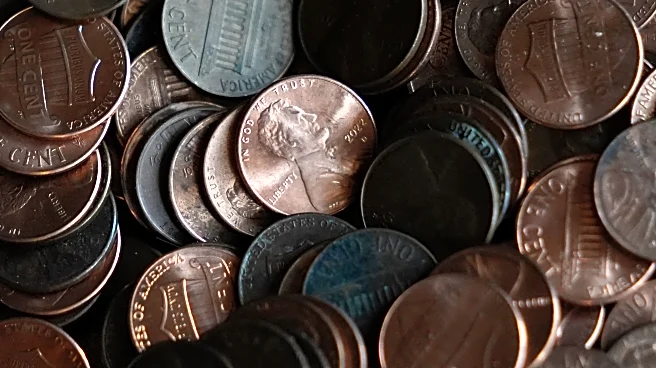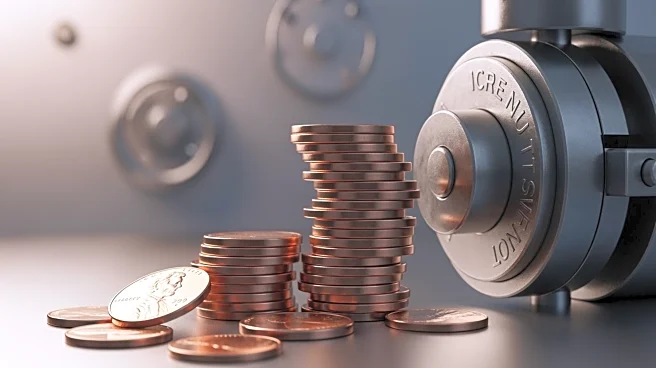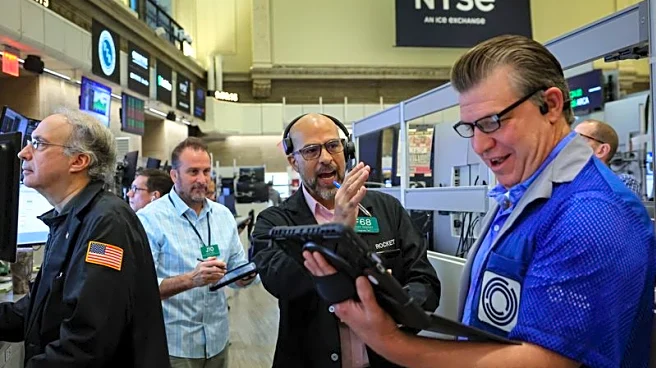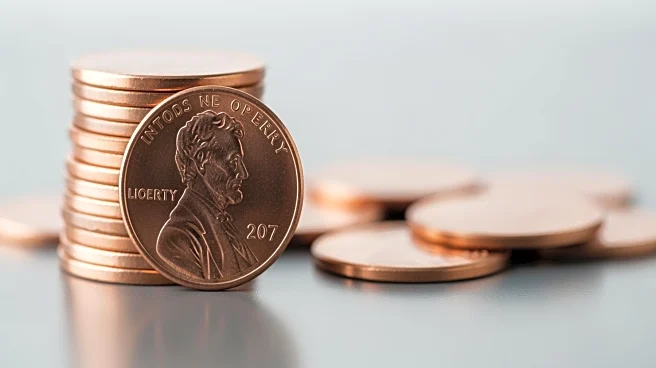What's Happening?
The U.S. Mint in Philadelphia is set to strike its last circulating penny, following President Trump's decision to cancel the 1-cent coin due to production costs exceeding its value. The cost of making a penny has risen to nearly 4 cents, prompting the decision to cease
production. The penny has been a staple of U.S. currency since 1793, but its relevance in modern financial transactions has diminished. Retailers have expressed concerns over the abrupt phase-out, with some adjusting pricing strategies to accommodate the change. The Treasury Department anticipates saving $56 million annually by halting penny production.
Why It's Important?
The discontinuation of the penny marks a significant shift in U.S. currency policy, reflecting broader economic trends towards digital transactions and cost efficiency. The move is expected to save the government millions in production costs, highlighting the need for fiscal responsibility in currency management. Retailers and consumers may face short-term challenges in adjusting to the absence of the penny, potentially impacting pricing strategies and cash transactions. The decision also raises questions about the future of other coins, such as the nickel, which also costs more to produce than its face value.
What's Next?
As the penny is phased out, retailers and consumers will need to adapt to transactions without the 1-cent coin. The Treasury Department may explore further currency adjustments, potentially addressing the production costs of other coins. Stakeholders, including businesses and consumers, will likely engage in discussions on the implications of this change, seeking solutions to minimize disruptions in cash transactions. The government may also consider public feedback and economic analyses to guide future currency policies.
















